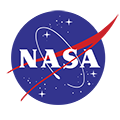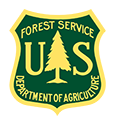CCIWG Retreat
The CCIWG conducted a strategic review of the CCIWG and US Carbon Cycle Science Program's recent activities, discussion on near term priorities and planning for upcoming activities on May 28, 2013 at NASA Headquarters in Washington, D.C. A range of carbon science topics of common interest to the member agencies were brainstormed, including current interagency endeavors such as the triennial NASA-ROSES Carbon Cycle Science solicitation and high latitude research. The CCIWG discussed the three community workshops that it is in the process of sponsoring and discussed ways to further enhance its individual agency and interagency priorities in alignment with the USGCRP priorities and in response to the community's 2011 Carbon Science Plan.
The following post-2013 major CCIWG themes/focus areas were reconfirmed as near-term priorities for CCIWG research and funding:
1. Carbon vulnerability in critical ecosystems, including vulnerability due to or affected by human systems and actions.
Regions with large and vulnerable carbon stores and high probability for tipping points are/will be targetted.
- Arctic and boreal - with primary vulnerability focus on thermal stress - including land use change and terrestrial to coastal transport and interactions, fundamental processes, observations and modeling.
- Tropics - primary vulnerabilities focus on climate/precipitation patterns and LUC/human - inluding ecosystem processes, observations, modeling, REDD.
2. Coastal and land to ocean interactions, land-aquatic interfaces including carbon transport and impacts of human systems
- considerations for watershed management, land use, coastal development and urban planning.
3. Urban and agricultural/rural to urban transitions /interactions
- drivers of emissions (human decisions, energy, policies, development, land use, infrastructure, economics, demographics),
- observational constraints and validation of emissions,
- “source tracking” in space and time.




